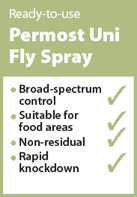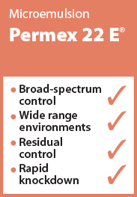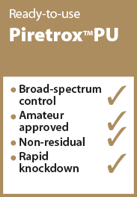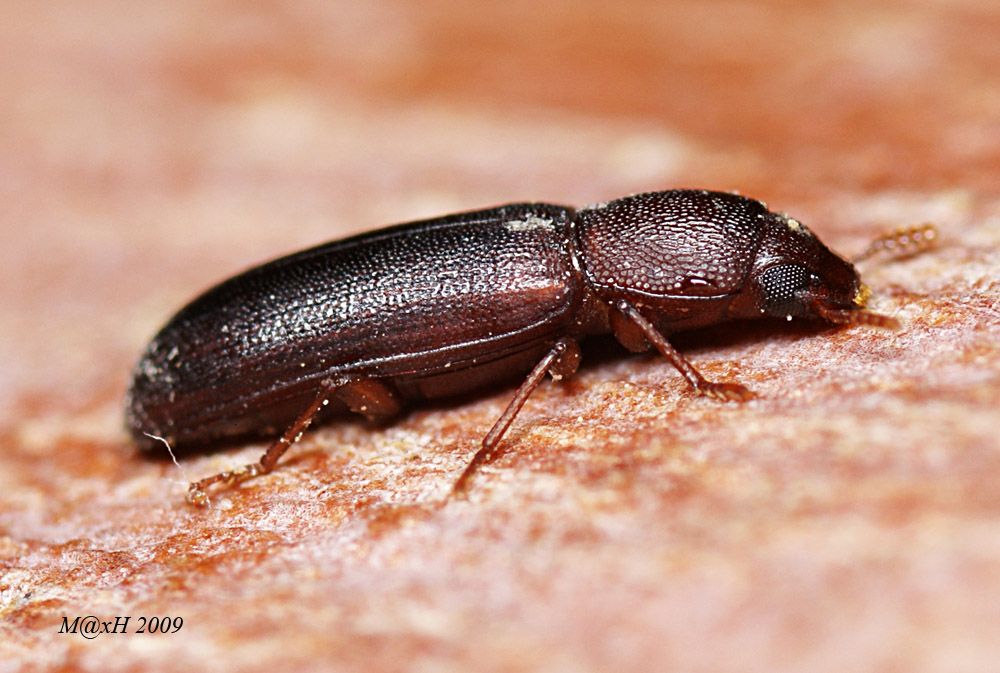Flour beetle
(Tribolium castaneum)
Although very similar, there are two main types of flour beetle: the rust-red flour beetle and the confused flour beetle. Both are found worldwide, though the red-rust flour beetle has an endemic population in the UK, which has been proliferated by the importation of stored products. The beetle can cause extensive damage to these imported foodstuffs. However, it is the confused flour beetle that is most common in the UK; both flour beetles have damaging effects on flour and animal feed mills.
Life cycle:
Complete metamorphosis
| Egg | The female flour beetle can lay up to 450 eggs over several months. Usually, these eggs take up to one week to hatch. |
| Larva | The larvae in both species is almost identical. Slim, white-yellow in colour, the larvae typically develop in 5-10 weeks. |
| Pupa | The pupae is the final stage before metamorphosis into the adult and is highly similar in both species. Pupae live freely, not restricted to a cocoon, in the larval food source. Development usually takes between 5-10 days. |
| Adult | Both flour beetles are reddish-brown in appearance and are of similar sizes, ranging between 3-4mm. However, a key physical difference is the ‘clubbed’ antennae of the confused flour beetle. Though the confused flour beetle can breed at lower temperatures, adults of both species breed throughout the year and can live for up to three years. Despite their many similarities, the two species do not interbreed. |
Habitat
Both flour beetles are commonly found in both animal feed and flour mills, with the confused flour beetle being the most common in the UK. Additionally, the red-rust flour beetle can often be found amongst stored food products.
Recommended Products
Click icons for more information
References
BPCA (2015) The British Pest Manual: A reference manual for the management of environmental health pests and pests of the food industry, 2015 edn., Derby: BPCA.
Walter, V. E. (1990) 'Stored product pests' in 'Handbook of Pest Control', Story, K., Moreland, D., (editors). Cleveland, Ohio: Franzak & Foster Co. (pp. 526-529).







